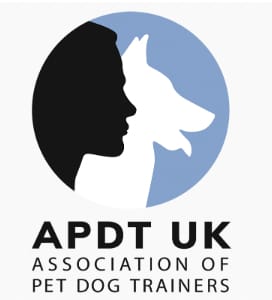What does your dog’s behaviour mean?
26/10/2020 - Blog
Don’t believe anyone who tells you that dogs can’t talk. They can! Dogs use behaviour and body language to communicate, so what does your dog’s behaviour mean?
Understanding doggy body language
Dog’s don’t have voices like us, but they do use a form of sign language instead. Your dog’s posture, eyes, ears, and tail speak volumes. Learning to understand doggy body language is the key to knowing what their behaviour might mean.
Interestingly enough, psychologists estimate that only 7% of human communication is the spoken word. 38% is tone of voice and a whopping 55% is body language. Which is why, it’s sometimes hard to get a message over by writing a blog…..real life dog training lessons are far more effective!
The thing is, that we’ve all grown up interpreting human body language and most of the time we don’t even know we’re doing it. Dogs, on the other hand, live in a human world where very often they have limited contact with other dogs and their human companions rely on a spoken language that dogs don’t fully understand. Little wonder that they sometimes get frustrated.
When you understand your dog’s body language you can tailor your training program to build his or her confidence and really have fun.
Let’s look at canine body language, starting at the tail and moving towards the nose – but remember that each part of the body works in conjunction with the rest of the dog. Always take an overview of doggy body language and never focus on just one part of the animal. It’s perfectly possible for a dog to have a wagging tail at one end and still be showing signs of severe stress.
What does your dog’s tail tell you?
A waggy tail indicates a happy dog – or does it? Depending on how the tail is being held, and how fast or slowly it’s moving, a wagging tail can convey many different messages.
The way the tail is normally held varies from dog to dog. A whippet’s tail is normally tucked it, while a Labrador tail tends to be horizontal and a husky has a really upright tail position. Get to know your pet’s relaxed posture – and then you can start to interpret the changes.
A gently swaying tail says “everything is right with the world” while an enthusiastically waving tail (usually accompanied by a wiggly body) means “life is great right now”
Tail held low or tucked in, maybe with a slight twitch at the very end and accompanied by a low, crouching posture means “I’m feeling scared and I don’t know what to do”. This behaviour can very quickly turn to snarling and growling if the dog continues to feel threatened. Try to remove the perceived threat and, as soon as possible, offer your pet a nice safe, undisturbed place to calm down.
A rigid, upright tail combined with stiff body posture and raised hackles indicates that your dog is approaching “fight mode”. Try to spot the signs of stress and take action before this situation arises.
Your dog’s posture speaks volumes
A nice relaxed body posture with a fluid limb movement, usually indicates that a dog is feeling OK. Stiff limbs and short strides tell you that a dog is either, curious, unsure, or getting ready to face a perceived threat. What is happening in the immediate environment? Is your dog about to make a big mistake? Do you need to intervene?
The saddest doggie posture of all, in my opinion, is that awful, crouching, belly to the ground type of movement. This happens when a dog is not at all happy with what’s going on around him or her. Chances are the eyes are rolling, the mouth is open, the tail is tucked in and the ears are flat to the head. So sad to see. If this is your dog, my advice would be to work with an experienced dog behaviourist to help your dog cope with whatever is worrying him or her.
Around the head
Head high, low or somewhere in the middle? A head held high indicates interest or arousal. What’s the rest of the body doing? Has your pet heard something exciting (e.g. a cheese wrapper)? Or are they stiff-bodied and about to engage the flight or fight mechanism?
Ears
There are so many types of doggie ears, so like tails, get to know your dog’s “normal” ear posture. For some breeds, the change in ear position can be really subtle. Think about the basset hound – those wonderfully floppy appendages are often too heavy to be fully “pricked” but if you know your dog, you’ll see a difference. Or German Shepherd Dogs – their ears look permanently pricked but again, there is a subtle difference between relaxed and alert.
Ears held back and as close to the head as possible indicate fear or aggression (in dogs, the two are very closely related)
Eyes
I see so many pictures on Facebook where a dog’s good nature is being celebrated as some other creature is pulling its fur. As a behaviourist though, I can tell from the dog’s facial expression that actually, it’s VERY unhappy. When a dog is happy and confident, it will usually have “soft” eyes and may even make eye contact. A distressed dog will actively avoid eye contact, turning its head away from the source of the discomfort. “Whale Eye” (when a dog shows the whites of its eyes) is a sign that the dog is stressed, possibly fearful and even may snap in self-defence.
Mouth
A dog’s mouth is incredibly expressive. Just as a human mouth can convey happiness, playfulness, fear, or anger, the position of your dog’s lips, teeth and tongue tells you how he or she is feeling. A relaxed dog normally holds its mouth closed, or slightly open and has a nice steady rate of breathing.
Panting is the dog’s cooling mechanism in hot weather but heavy breathing also signals stress. Ditto for salivating. Some dogs are naturally slobbery, especially around food, but excessive saliva indicates extreme distress. It’s something I often see in dogs who are suffering from separation anxiety.
If the lips are pulled back to expose the teeth – that’s a sign of extreme fear. If however you are seeing teeth AND the dog’s nose is wrinkled, back off! That dog is giving you a final warning.
Using body language as a training aid
If your dog is exhibiting unwanted behaviours in certain situations, understanding his or her body language will help you to spot when trouble is brewing and take avoiding action.
That’s exactly what dog behaviourists do. We identify the triggers that lead to unwanted behaviour and we help you to teach the dog a better way to react.
Harnessing the power of doggy body language to have more fun with your pet
I’m very aware that I talked a lot in this blog about the signs of stress. The signs of a happy dog are nearly always easy to spot. If your dog leans into you, looks into your eyes, wiggles his or her body, has an enthusiastically waving tail and maybe offers a play bow – you’ve cracked it! At this moment in time, you have a happy dog. What are you doing to make your dog feel so good? Keep doing that and talk to a dog trainer about suggestions for even more confidence building activities for your pup.
If you need help to either correct your dog’s unwanted behaviour or just have a whole lot more fun with your pet, the team at CK9 Dog Training are here to help.
We offer a range of face-to-face solutions for people who need dog training in Surrey and we also hold online dog training sessions for people who can’t make it to class.
Discover more about online dog training
You might also like these articles
How to stop your dog behaving badly








